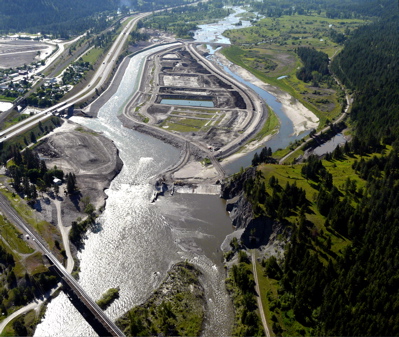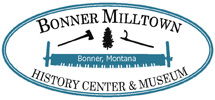 An aerial view of the Milltown Superfund site from June of 2008. One of the nation’s most ambitious attempts at environmental remediation, ecological restoration and community redevelopment is now under way at the confluence Clark Fork and Blackfoot Rivers near Milltown, Montana.
An aerial view of the Milltown Superfund site from June of 2008. One of the nation’s most ambitious attempts at environmental remediation, ecological restoration and community redevelopment is now under way at the confluence Clark Fork and Blackfoot Rivers near Milltown, Montana.
For a century, the confluence of the Clark Fork and Blackfoot Rivers has been submerged by the Milltown Dam Reservoir. After decades of effort to find a solution for the problem presented by heavy metal contaminated sediments in the reservoir, the next three to five years will see the two rivers cleaned up and returned to a free flowing state.
Most of the copper that helped electrify America in the early and mid-20th century was mined from the headwaters of the Clark Fork River in western Montana, in the city of Butte. Fortunes were made and riches flowed out of the state to places like New York and California, and left behind a contaminated landscape. The length of the entire Clark Fork River Basin – some 115 miles – is a string of Superfund sites, all set amidst the dramatic scenery of the Northern Rockies.
The state’s mining legacy left more than 6.6 million cubic yards of mining waste, laden with heavy metals and arsenic, in the sediment behind the Milltown Dam. The contamination, much of which washed downriver from Butte’s mining district during a massive flood in 1908, polluted the community of Milltown’s aquifer with arsenic. Additionally, the dam itself has long blocked a critical migration corridor for the threatened native bull trout.
After more than twenty years of study, planning and legal negotiation, the work on one of the nation’s largest Superfund cleanups began in the fall of 2006. Under the multi-year cleanup plan, more than two million cubic yards of toxic sediments and the dam and associated structures will be removed. The State of Montana will follow with a restoration plan to return the river to a similar state that was there just a century ago by reestablishing natural stream channels and native vegetation.
Overlaid on the restoration work is a redevelopment effort aimed at capitalizing on opportunities afforded by the cleanup for economic development and community revitalization. In 2003, The EPA and Missoula County convened local citizens and stakeholders to form the Milltown Redevelopment Working Group. Through a collaborative process, the Working Group has been successful in establishing a community council, securing funding for a trails network in the Milltown area, and developing a conceptual plan for a state park at the confluence.
